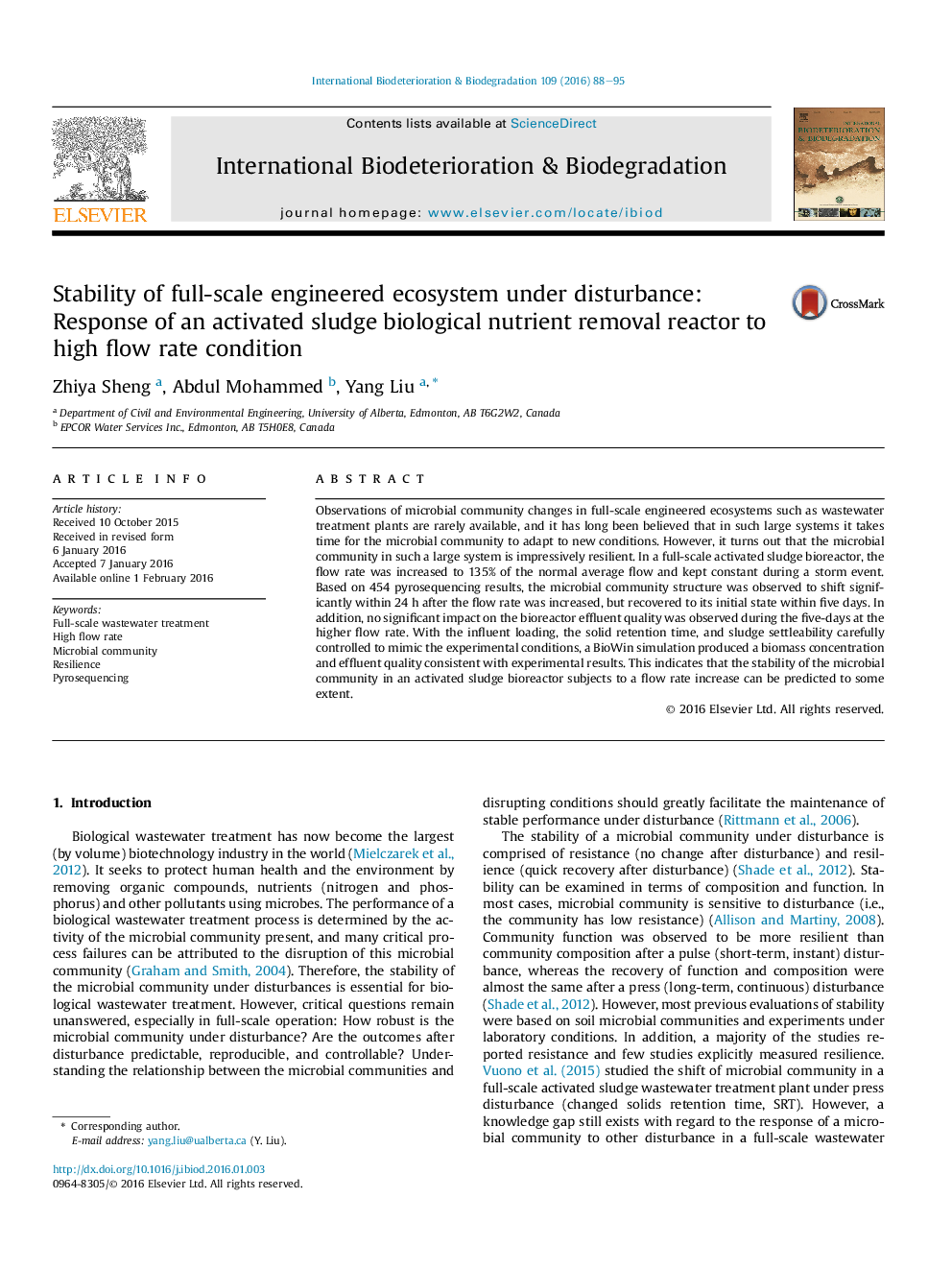| Article ID | Journal | Published Year | Pages | File Type |
|---|---|---|---|---|
| 4364263 | International Biodeterioration & Biodegradation | 2016 | 8 Pages |
•Full-scale activated sludge BNR reactors (AS-BNRs) are robust under disturbance.•Microbial community in a full-scale AS-BNR is highly resilient to flow rate increase.•Daily monitoring by next generation sequencing enables detection of this resilience.•The function of a full-scale AS-BNR is stable under flow rate increase.•The community and functional stability is reproducible and predictable to some extent.
Observations of microbial community changes in full-scale engineered ecosystems such as wastewater treatment plants are rarely available, and it has long been believed that in such large systems it takes time for the microbial community to adapt to new conditions. However, it turns out that the microbial community in such a large system is impressively resilient. In a full-scale activated sludge bioreactor, the flow rate was increased to 135% of the normal average flow and kept constant during a storm event. Based on 454 pyrosequencing results, the microbial community structure was observed to shift significantly within 24 h after the flow rate was increased, but recovered to its initial state within five days. In addition, no significant impact on the bioreactor effluent quality was observed during the five-days at the higher flow rate. With the influent loading, the solid retention time, and sludge settleability carefully controlled to mimic the experimental conditions, a BioWin simulation produced a biomass concentration and effluent quality consistent with experimental results. This indicates that the stability of the microbial community in an activated sludge bioreactor subjects to a flow rate increase can be predicted to some extent.
